- Troy Sadler
- Professor
- RAPID: Responding to an Emerging Epidemic through Science Education
- https://epiclearning.web.unc.edu/
- University of North Carolina Chapel Hill
- Pat Friedrichsen
- Professor
- RAPID: Responding to an Emerging Epidemic through Science Education
- https://epiclearning.web.unc.edu/
- University of Missouri
- Li Ke
- Postdoctoral Researcher
- RAPID: Responding to an Emerging Epidemic through Science Education
- https://epiclearning.web.unc.edu/
- University of North Carolina Chapel Hill
- Laura Zangori
- https://education.missouri.edu/person/laura-zangori/
- Assistant Professor
- RAPID: Responding to an Emerging Epidemic through Science Education
- https://epiclearning.web.unc.edu/
- University of Missouri
Facilitators’
Choice
Choice
Public Discussion
Continue the discussion of this presentation on the Multiplex. Go to Multiplex




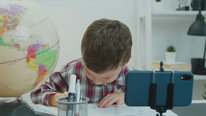
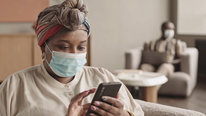
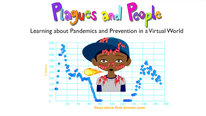
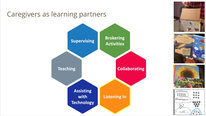
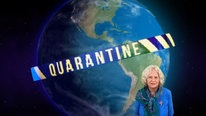
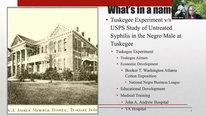
Catherine McCulloch
Senior Project Director
Troy and team, you seemed to have been able to transform a tragic event, i.e., the pandemic, into an opportunity to build scientific literacy while engaging students in a topic of critical importance to them. What are some take-aways that teachers may be able to apply to building scientific literacy through other topics that are important to students?
Troy Sadler
Professor
We found that centering the issue, that is, the COVID-19 pandemic as a critical social issue, as the basis for instruction was really important. This issue provides a stark example of the interconnections between science and society, and it is important to teach science in ways that reflect those connections. If we try to isolate the science out of the issue, it becomes much more challenging for students to connect what they are learning in science classes to their lives outside of school. For our work, the Socio-Scientific Issues framework provides a helpful to guide this teaching approach. For teachers interested in the SSI approach, we have a few NSTA resources/articles that would be helpful: connecting to historical dimensions of issues, promoting systems thinking with issues, teaching vaping as an issue, teaching climate change as an issue.
We also provide some information about what students are interested in learning relative to COVID-19 in a recent NSTA blogpost that might be helpful to folks interested in building student perspectives and interests into their instruction.
Kara Dawson
I really love this project. It is similar to some work I have been involved with related to how middle school students assess the credibility of online materials (Angela Kohnen from UF leads the project). We have had students look at resources related to the environment (among other issues) and Angela and her recent graduate, Gillian Mertens, have developed an interdisciplinary curriculum for middle schoolers in collaboration with 8th grade teachers. It may be fruitful for you all to connect. Great work in a challenging time.
Troy Sadler
Professor
Thanks, Kara! Angela and I were part of a project when we were both in Missouri. Like the work we've described in the featured project, that previous project featured student negotiation of complex societal issues and created natural opportunities to connect STEM disciplinary practices with literacy practices.
Troy Sadler
Professor
Hi All, Thanks for visiting our project. This work was made possible through a collaboration among high school science teachers and a team of university-based science educators. When the pandemic emerged, we thought it important to respond to it through science education. As the world has struggled to get a grasp on the science of COVID-19, to make sense of information (and misinformation) shared about the pandemic, and to understand what to do in response, we thought science classrooms ought to be a place to help create solutions. That thinking led us to create materials and support enactment of those materials in science classrooms with the goal of better preparing students for dealing with the pandemic. Please check out the video, explore other project resources through our website, https://epiclearning.web.unc.edu/covid/, and let us know what questions you might have.
Sarah Carrier
Thank you for this video and this important work. Helping students connect with the science of viruses and the incredible collective science efforts that helped develop safe vaccines is how we help address pseudoscience and support our communities. I'm sure many of the students parents learned from them as well. Nice work!
Julie Brown
Really great work, team! I appreciated learning about the curriculum resources and first-hand teacher perspectives. Thank you for including REESE curriculum materials link in the comments, too!
Colby Tofel-Grehl
This is such a great project! One question I have is how did you engage teachers during this overwhelming time?
Cynthia Carson
This is a great project! I am wondering if any of the teachers discovered ways to connect to other content areas through this work in their classrooms?
Pat Friedrichsen
Professor
Hi Colby:
Nice to hear from you. That's a great question. We sought a lot of teacher input in regard to when they wanted to meet. During the workshop, they divided into small groups of their choice and worked on developing lessons of their choice - given the tools and ideas we suggested. All the teachers who participated wanted to create COVID-19 instructional materials and many of them had collaborated in an earlier workshop, so they were really motivated. I think immediate relevancy, teacher choice, collaboration and flexibility were the key factors.
Colby Tofel-Grehl
Colby Tofel-Grehl
So awesome!
Pat Friedrichsen
Professor
A socio-scientific approach certainly lends itself to interdisciplinary collaboration. However, given the short timeline between design and implementation, the teachers in this project did not connect to teachers in other disciplines. In an earlier project, we did have an English teacher and a biology teacher who participated in an SSI workshop and they designed interdisciplinary instructional materials for the class they co-taught.
Colby Tofel-Grehl
Troy Sadler
Professor
Just to build on Pat's comments about some of our previous work with teachers and SSI... We did some research on teacher uptake of SSI teaching through a set of case studies of science teachers involved in SSI PD with an expectation for enacting an SSI unit with students. The science teachers who were most successful with SSI planning and teaching were those who had previous experience collaborating with teachers from other content areas--literacy and social studies in particular. Here's the study if there's any interest:
Friedrichsen, P. J., Ke, L., Sadler, T. D., & Zangori, L. (2021). Enacting co-designed socio-scientific issues-based curriculum units: A case of secondary science teacher learning. Journal of Science Teacher Education, 32, 85-106. DOI: 10.1080/1046560X.1010.1795576
Jaime Gutierrez
Research Associate II
Hi Troy and team, this is amazing work! Thank you for taking it on and doing so quickly and effectively. I love the relevance to student life and the real-time aspect of it. Digital literacy is a critically important topic and it's great to see such innovation being put into action around the issue. I'm curious about a couple of things; 1) one of the bigger issues over the last year has been the overwhelming amount of data and information, how did the team approach that parsing and filtering process; and 2) part of digitally literacy is questioning sources and motives/agendas, were there any interesting discussions with teachers or students about the validity of the data/information presented?
Thanks for sharing!
Troy Sadler
Professor
Jaime-Thanks for your interest in the project and sharing your questions. IN terms of parsing and filtering, we (that is our design team including the partner teachers) did much of the parsing so that students were presented with sets of curated materials that we had already sorted through as a part of designed learning activities. However, part of the curriculum included some explicit resources related to digital/media/information literacy which provided students with ideas and tools about just the things you are mentioning: how to filter information, what questions to ask of sources, etc. The specific approaches we used can be found at our website under the Media & Information Literacy (MIL) tab: https://epiclearning.web.unc.edu/covid/.
I'm hoping that one of our project teachers might chime in re: the nation of discussions that emerged with their students about some of these issues.
Pendred Noyce
This is a wonderful project in so many ways--using a crisis to teach critical thinking skills, making science relevant to students' lives, supporting teachers in their creativity and passion. I am going to enjoy looking at your website and materials that may influence our own project teaching COVID-base data science to middle school students in afterschool programs.
A few questions: how do you see these materials being used after COVID subsides? How are you assessing student learning? And have you seen any changes in student attitudes toward science or sense of themselves as scientists?
Troy Sadler
Professor
THanks for viewing and sharing questions.
We are interested in making the materials flexible enough for use when the next viral pandemic emerges. In a follow-up project that was just funded through the DRK12 program, we will be using some of these materials to design a unit about viral epidemics with a strong focus on multiple models and how students coordinate different kinds of models.
Our primary strategy for assessing student learning is a performance task in which students use models they develop in the unit to support a position related to what their communities should do in response to COVID. We also collected data about how students select information sources and what kinds of information they are interested in learning--but this survey is more focused on capturing student ideas and interests as opposed to assessing learning.
We did not assess attitudes or science identities. It's a great question and I suspect that these kinds of issues based experiences in which students can see how science and the work of scientists is relevant to their lives can have positive impacts on attitudes toward science, but we haven't looked for that yet.
Kwame Owusu-Daaku
Thanks for such a great video on using current issues to teach scientific literacy and for sharing your curriculum!
Patrick Smith
Hello, REESE Team. Thank you for this project and the excellent video. Your materials seem to capture the kind of science instruction we want all students to experience, weaving together content and science practices authentically. One question . . . how quickly do you think materials like yours can be created? When crises like COVID emerge, science teachers need materials like yours. Obviously, you got the materials in teachers' hands in time for them to still address a critical need, which is an amazing accomplishment. What's a reasonable development timeline for materials to address something like COVID?
Troy Sadler
Professor
Patrick, Thanks for viewing and your question. We were able to move quickly with teacher co-design because we had a cohort of teachers who had worked with our team in the recent past, understood our approach for using issues and modeling, and were interested in teaching about the crisis. With this as a backdrop (and help in terms of NSF funding), we were able to bring teachers together and collaborate with them to create a series of learning activities in about a months time. Completing development of a complete unit took another round of collaborative PD and design work with our teachers. In our case this happened over the summer with a full unit ready for enactment by the beginning of the school year.
We are currently working to take the very specific COVID unit and make it more general so that when the next pandemic hits, it can be quickly modified and used. For other kinds of crises (extreme weather, environmental disasters), it will take longer, but I do think there are lessons learned from our current project that might inform that work.
To get back to your question, I think the development timeline really depends on the teachers involved. With teachers experienced in the use of issues and scientific practices, I think develoment and enactment can happen quickly--on the order of weeks or months. With teachers who are just being introduced to issue based teaching, the timeline would be much longer (maybe longer than the crisis itself). I think this speaks to the need to introduce issue-based teaching with teachers long before crisis situations emerge.
Patrick Smith
Thanks a lot, Troy. I appreciate all the factors you describe and how they relate. I think the fact you're thinking about a generalizable approach so we're more prepared for the next pandemic is fantastic.
Laura w Martin
This project sounds really relevant to students' lives and rewarding for the teachers involved. I'm wondering if you could say a few words about the pedagogy - how are lessons structured, how are discussions organized?
Troy Sadler
Professor
We use a what we call Model-oriented issue based teaching as a framework the the design and organization of lessons. In a nutshell, this means creating an experience to engage learners in the issue at the beginning of instruction to serve as an anchor and context for the unit. Next students engage in different modeling experiences and/or science explorations, data analysis, etc. to understand the science of the issue while simultaneously paying attention to ways in which the science connect with social issues. In the final, culminating activity, students are challenged to synthesize what they have learned in terms of science ideas and practices along with their reasoning about social dimensions of the issues to create or advocate for a position or solution.
Individual lessons will have different structures depending on the goals of a particular lesson. YOu can get a sense of the individual learning activities from our website. We're working to share a more comprehensive treatment of the overall unit including educative curriculum materials, so check back later this summer: https://epiclearning.web.unc.edu/covid/
Guopeng Fu
The project is timely and I think science education is very relevant here. As a science teacher educator, my student teachers also saw the Covid-19 as an opportunity to talk about health science, immune system, virus, and how social issues are connected with science in their class. Another student has just completed her M.Ed project on middle school students' ability to discern rumors/misinformation about science and technology, i.e. media literacy. Looking forward to seeing more outcomes from this project!
Molly Zhang
Hi REESE team! I think it is a great resource not only for students but also a great model for teacher educators to think about how to help teacher candidates learn and develop life-related science courses. Thank you for sharing this amazing video and the website.
Sisi Han
Thank REESE team for sharing your work! I like the significant collaboration between researchers and teachers! The curriculum materials are so relevant to our current life and greatly help teachers develop student scientific literacy. I am wondering how learning goals for the curriculum were determined and how teachers' instructional repertoire was used for the material development? Thank you again for sharing such great work!
Troy Sadler
Professor
As the university based team that applied for the NSF funding that made the work possible, we had several learning goals going into the professional development work with the partner teachers. We shared those goals with the teachers as we were recruiting participant teachers. During the PD, we began by starting with those goals and having conversations about what teachers saw as the needs of their classrooms. So, in the end the the learning goals were collaboratively generated.
The teachers instructional practices and repertoires really became embedded in some of the activities as they formed design teams and led the design efforts.
Lauren Goff
Excellent work! The connection that students will be able to make to this subject matter will really allow students to be invested and empowered to ask questions and think critically. I'd love to learn more about "lessons learned" from the teachers who used this in their classrooms- areas they would like to expand upon, shift focus, or takeaways from student conversations. Well done!
Troy Sadler
Professor
I'm hoping that some of our teacher partners might stop by and share some of their insights.
As a science ed researcher (former teacher) involved with the project, here were a couple of my takeaways...
HS students had/have lots of concerns and questions about the pandemic and they look to their science teachers as an important source of information. We are all surrounded by information in today's media rich environment, and students were looking to their teachers for help in making sense of what was going on.
The NGSS made some great contributions to the improvement of science teaching and learning primarily through attention to student engagement in scientific practices as an essential dimension of science learning. However, I think what we have seen in this project is that the NGSS do not allow for enough flexibility for teachers to respond to crisis situations. If we find science teachers in the midst of a global pandemic saying that they can’t teach the science associated with the pandemic their students are living though because doing so would not align with their standards, then something is wrong with the standards. This is exactly what we encountered. We worked with our partner teachers to create ways of working around this concern, but that probably was not the norm.
Chenchen Ding
It is a great project. You have a rapid response to current issue and incorporate it to science curriculum. Teachers can use those curriculum in their class. I am sure that students are also interested in learn more about things that is happening in their life with huge effects. I am wondering if the curriculum is difficulty for high school students to understand? How teachers adapt the curriculum to their grade level?
Li Ke
Postdoctoral Researcher
Thank you, Chenchen! One of the great features of our curriculum material is that they are co-designed by high school teachers. So they fit very well with high school students. In our curriculum materials, we also identify opportunities to scale up/scale down, so teachers can enact the curriculum in a way that aligns with where their students are.
Jamie Elsner
Fantastic video! It's been wonderful working with the REESE team as a graduate student and learning from incredible these teachers and researchers. We will continue to update the website with more Covid-19 activities, so be sure to check it out in the future and share the link with educators.
Troy Sadler
Channa Comer
STEM Educator
Hello Troy and team,
What a fantastic resource and excellent integration of science and society. Is there an explicit framework for the development of your curriculum that educators might use to adapt other topics to this model?
Troy Sadler
Professor
Our design work was informed by the socio-scientific issues framework. We present some info about this on our project site: https://epiclearning.web.unc.edu/
We've also written about the framework--here are a few examples:
Peel, A.*, Sadler, T. D., Friedrichsen, P., Foulk, J. A.*, & Kinslow, A. T.* (2018). Rigorous investigations of relevant issues: A professional development program for supporting teacher design of socio-scientific issue units. Innovations in Science Teacher Education, 3(3). Retrieved from http://innovations.aste.org/?p=3026
Sadler, T. D., Foulk, J. A.*, & Friedrichsen, P. J. (2017). Evolution of a model for socio-scientific issue teaching and learning. International Journal of Education in Mathematics, Science and Technology, 5(1), 75-87. DOI:10.18404/ijemst.55999
Friedrichsen, P., Sadler, T. D., Graham, K., & Brown, P. (2016). Design of a socio-scientific issue curriculum unit: Antibiotic resistance, natural selection, and modeling. International Journal of Designs for Learning, 7(1), 1-18.
Xinxin Wang
Great work! I really enjoy the idea of connecting live experiences into science teaching. Hope students will gain more emergency/pandemics literacy through such a promising project!
Troy Sadler
Pasha Antonenko
Timely project and an awesome video! The focus on community well-being is super important. Thank you for doing this highly needed work.
Troy Sadler
Wei Liao
Such a timely, interesting, and relevant endeavor in science education!
Troy Sadler
Peng He
Great work, great project, REESE team! SSI instruction is one of my favorite approaches to develop students' scientific literacy for being modern citizens. COVID is a perfect and timely SSI that students may realize the power and usability of science when they experienced and engaged in the activities in the curriculum. Given the challenges of virtual learning, I wonder what kinds of evidence (e.g., artifacts) show students have achieved some aspects of scientific literacy that will help them to deal with the future pandemic? Did you have any kinds of assessments that measure students' such kind of transferable proficiency?
Troy Sadler
Professor
The culminating project at the end of the COVID-19 unit challenged students to use a scientific model, find new information (and explain why the sources of that information were trustworthy), and to apply science ideas they had learned to craft policy recommendations for their city. This served as a summative assessment for the unit and offers the kind of evidence of scientific literacy that you referenced. We did not incorporate an assessment of transfer--some of our previous work does suggest that SSI learning can transfer to some extent to the ways in which learners negotiate other issues. But the conditions under which this happens and how to best support this remains an area of active research.
Lei Liu
Very nicely done and I look forward to exploring more of your project website. We cannot stress enough the importance of using current and historical issues relevant to student life to contextualize their science learning. In your work, did you include sources of information that students tend to check out related to COVID? What are some of the challenges and successes you experienced to address misinformation issue?
Troy Sadler
Professor
We have a set of learning activities that specifically addresses media and information literacy. We ended up working with our partner teachers to develop two different heuristics for students to use around making sense of media and misinformation. Our initial materials were difficult for some students to use, so we created a second approach (really we borrowed from existing work on the CRAP test). For some of our teachers and students, the second approach doesn't go into enough detail --so we found that having both versions available made it possible for teachers to adjust the depth of their student explorations in these areas. You can find these material on our project site under the Media and Information Literacy tab: https://epiclearning.web.unc.edu/covid/
Wanda Bryant
Thanks for this relevant project! I was wondering what the Lexile value is of the reading and am interested to know if before-during-after reading strategies were used.
Troy Sadler
Professor
We have not looked into reading lexiles of the materials. Thanks for raising this issue--it's something for us to work on moving forward.
Nuo LI
Science education is becoming more and more closely connected with students' daily life, which allows students to learn science through life and also use the knowledge they have learned to live a better life. Thanks for this timely great work!
Troy Sadler
Michael Berson
Troy and Team,
What a powerful project. I really like your connections to the broader field of social studies and elevating student voices.
Troy Sadler
Professor
Michael, It's good to hear from you again. Thanks for viewing the video.